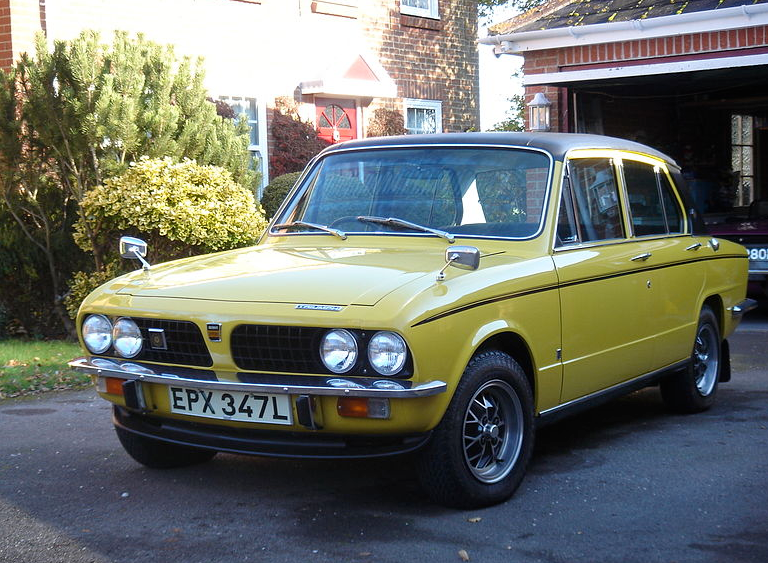classic car month triumph dolomite
This time for our Classic Car of the Month we’re going for a true British classic. A punchy small saloon by the Triumph Motor Company division of the British Leyland Corporation that offered similar power capabilities to the infamous BMW 2002 tii. Can you guess what it is?
We’re talking about the Triumph Dolomite, a popular small car produced in Canley, Coventry between October 1972 and August 1980. The Dolomite was the last addition to Triumph’s catalogue of small cars, codenamed Project Ajax, which started in 1965 with the Triumph 1300 - designed to be a replacement for the Triumph Herald. Triumph had previously used the name Dolomite for a range of models before the Second World War, and revived the name for their sporty new model.
About the design 
The Triumph Dolomite was unveiled at the London Motor Show in October 1971, designed as as sporting relative to the Herald. The Dolomite made use of the longer body shell from the front wheel drive Triumph 1500, but carried over the majority of the running gear from the rear-wheel drive Triumph Toledo.
This new Triumph model was aimed at the new compact performance-luxury sector, giving Triumph a push for sales against competitors like the BMW 2002 and Ford Cortina GXL. The Dolomite was offered with a high level of standard equipment, including twin headlamps, a clock, luxury seats and carpets, a heated rear window and a cigar lighter. Styling was an updated version of the Triumph 1500, with updates like a black painted rear panel and new wheel trims.
The Triumph Dolomite was designed by Giovanni Michelotti, one of the most famous sports car designers of the 20th century. As well as working with Triumph and British Leyland, Michelotti was noted for his design work for Ferrari and Maserati. Although the Dolomite gained a reputation for being sleek and speedy, competition from the BMW 2002 was costing Triumph both in terms of sales and reputation. To combat this, Triumph unveiled the Dolomite Sprint in June 1973, with a new engine that allowed the Sprint to stake a claim as the world’s first truly mass-produced multi-valve car.
The trim in the Dolomite Sprint featured the addition of standard alloy wheels, another industry first for a British production car, along with a vinyl roof, front spoiler, twin exhausts and lowered suspension. As the Sprints developed through the years they were fitted with body side trims, a plastic surround for the gear lever, and a driver's door mirror, headrests and radio. Laminated windscreens were fitted as standard from 1978 and twin rear fog lamps were also fitted from 1980 in compliance with updated UK legislation.
What people thought then and what they think now
Unfortunately for Triumph the Dolomite gained a reputation for being fragile, thanks to its introduction at a time when British Leyland and Triumph had just introduced a range of new models. These used completely new architecture and the alloy head/iron block construction of the OHC slant-4, which meant that mechanics and dealerships were often not aware of the servicing requirements of the engine - leading new owners to feel a little underwhelmed with the maintenance and longevity. These new engines in particular required the cooling system to be well maintained, and partially filled with a rust inhibitor, to prevent corrosion leading to radiator blockages and overheating.
However, if maintenance was well completed then there is no reason why you couldn't still see a Triumph Dolomite on the roads to this day. For classic car enthusiasts the Dolomite, and particularly the Dolomite Sprint, are still popular vehicles, with many parts still available for repairs and maintenance and great support through events and clubs, like the Triumph Dolomite Club. Figures show that there are only about 1300 roadworthy Dolomites registered on British roads in the modern day, with 300-400 16 valve Sprints.
Do you think the Dolomite is a great example of a British classic? Tell us your thoughts at @Footman_James.

COMMENT